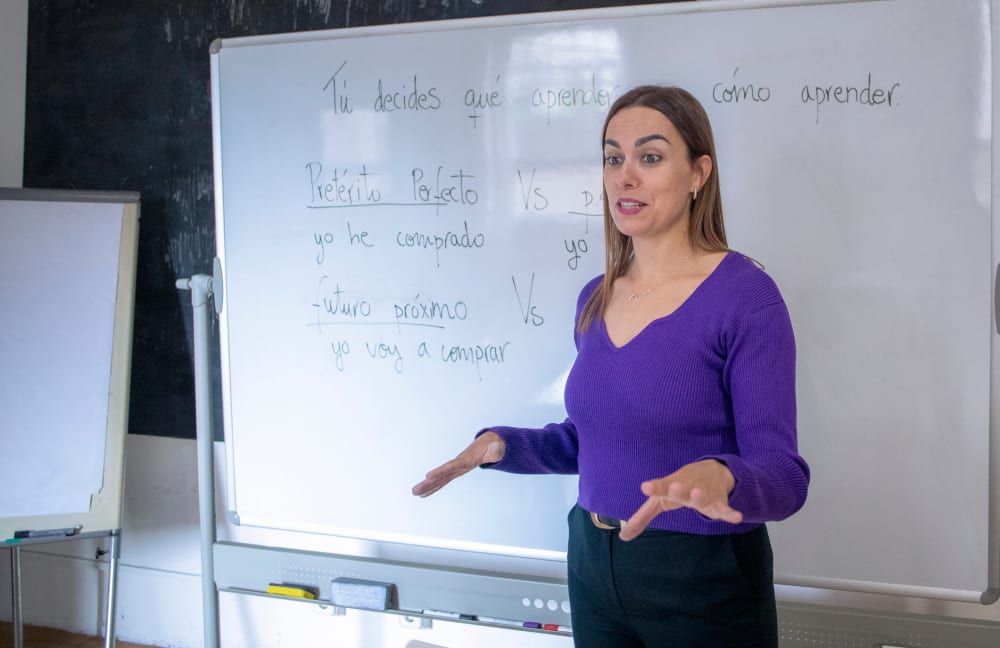This informal CPD article, ‘Teaching Speaking Skills in Language Lessons: Process vs. Product Approach’, was provided by International Language Experts, who organise language training for companies and individuals.
Teaching speaking skills in language lessons involves a complex interaction between instructional methods, lesson objectives, and teacher roles. One of the central debates in language pedagogy is the focus on process versus product when planning lessons. These approaches not only shape the content and flow of the lesson but also impact how speaking skills are developed and assessed. In both approaches, correction practices and the role of the teacher differ significantly, reflecting the ultimate goal of the learning activity—whether it prioritises fluent communication or the accuracy of language use.
Process-Oriented Approach to Speaking Activities
The process-oriented approach emphasises the journey of communication rather than the final outcome. In this approach, the goal is often to foster fluency, encourage student autonomy, and help learners develop their ability to express themselves in real-time without undue concern about errors. This reflects the communicative language teaching (CLT) approach, which prioritises meaningful communication over grammatical perfection (Richards, 2006).
In process-oriented activities, students are encouraged to engage in conversation or dialogue with minimal interruptions, allowing them to explore their thoughts, experiment with language, and build confidence in their speaking abilities. These activities often simulate real-life speaking situations, such as discussions, debates, or role-plays, where the emphasis is on achieving communicative goals rather than on linguistic accuracy (Harmer, 2007).
When the goal of the activity is fluency, correction is often delayed or minimised. Immediate correction, in this context, could hinder the flow of conversation, disrupt students' confidence, and detract from the communicative purpose of the task. Teachers play a more passive role during fluency-based activities, acting as facilitators or monitors rather than active participants in correcting student errors. The primary goal is to create an environment where students feel comfortable taking risks with language, which is seen as crucial for long-term speaking development (Thornbury, 2005).
Teacher’s Role in Process-Oriented Activities
In a process-oriented activity, the teacher’s role is primarily one of facilitator or guide. This means setting up the activity, providing clear instructions, and allowing students the freedom to interact with minimal interference. The teacher may step in only if communication completely breaks down or to provide gentle prompts if students get stuck. The teacher also monitors student interaction to provide feedback later, rather than interrupting the flow of communication (Lightbown & Spada, 2013). This kind of delayed feedback can be provided at the end of the activity, where the teacher can address common mistakes without undermining students' fluency practice.
Product-Oriented Approach to Speaking Activities
On the other hand, a product-oriented approach focuses on accuracy and the end result of speaking activities. Here, the objective is for students to produce language that is grammatically correct, well-structured, and clear. This approach is often used in preparation for exams or formal presentations, where linguistic precision is essential.
In product-oriented activities, such as structured speaking exercises or rehearsed presentations, error correction plays a more central role. Teachers may interrupt or provide immediate feedback to ensure that students are using the language correctly. The goal is to polish students' language skills so that they can deliver a final, error-free product. Such activities require teachers to adopt a more active role, often correcting mistakes as they arise and providing detailed feedback on accuracy (Ellis, 2009).
Teacher’s Role in Product-Oriented Activities
In a product-oriented lesson, the teacher's role shifts from facilitator to that of an instructor or coach. Here, the teacher provides more direct intervention, ensuring that students are practicing correct forms of language. Teachers may engage in modelling, demonstrating correct usage before asking students to produce it themselves, and giving immediate corrective feedback when errors are made. This form of feedback, often referred to as "explicit correction," helps learners internalise the correct forms and use them appropriately in future tasks (Lyster & Ranta, 1997).
For instance, if students are working on a formal presentation, the teacher may stop them mid-sentence to correct a mistake, particularly if it involves a critical aspect of language, such as tense or word order. This interruption is not viewed negatively within the product-oriented framework because the emphasis is on mastering accuracy before moving on to more complex tasks.














